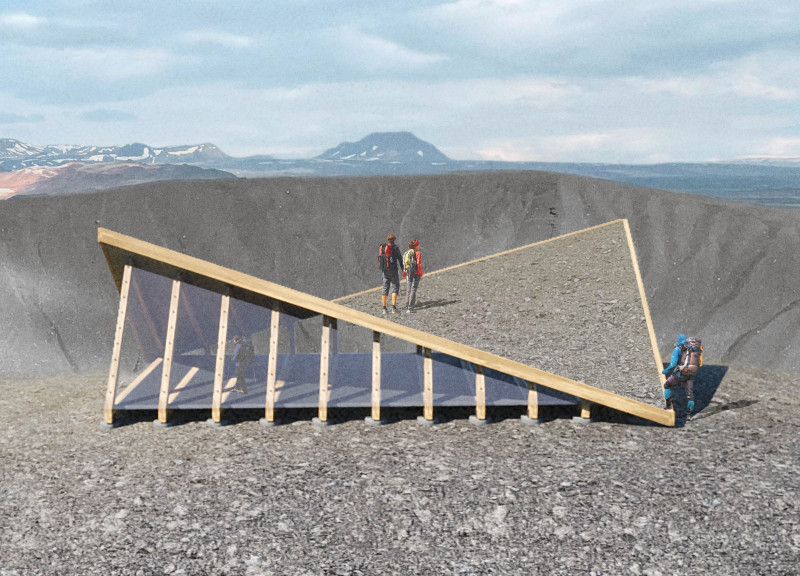5 key facts about this project
The Hverfjall Lookout Point is located at the top of Hverfjall, a volcanic crater in Iceland. It functions as a place for hikers to rest and observe the beautiful landscape. The design draws inspiration from both the natural surroundings and Iceland’s historical connection to exploration, taking on a tent-like shape that evokes the form of Viking longboats.
Design Concept
The concept aims to interact harmoniously with the environment while providing a unique experience for visitors. The structure begins with a simple geometric shape that has been altered through subtractions, representing natural processes like erosion. This method establishes a connection with the volcanic terrain, and the design blends into the scenery, reflecting the curves and lines of Hverfjall.
Materiality
Timber forms the primary structure, chosen for its sustainability and suitability to the local environment. This selection aligns with modern practices focused on reducing the environmental impact of buildings. The roof made of gravel comes from the site itself, enhancing its bond with the geographic features and minimizing transportation needs.
Structural Elements
Concrete piers create a solid foundation, necessary for stability on the volcanic soil. This choice allows the lookout point to appear light and unobtrusive. The inclusion of steel components, such as bolts and mesh, strengthens the overall structure while keeping visual impact low. These material choices ensure that the building can withstand Iceland's varied weather conditions.
Visiting Experience
The design focuses on enhancing visitor engagement, with carefully placed viewpoints and resting areas. The shape of the lookout invites people to stop and take in their surroundings. Natural light enters through the recycled polycarbonate glazing, creating a pleasant atmosphere inside.
The lookout point offers an opportunity to connect with the expansive volcanic landscape. It serves as a quiet place where visitors can pause, observe, and appreciate the relationship between the natural world and human-made structures.



















































